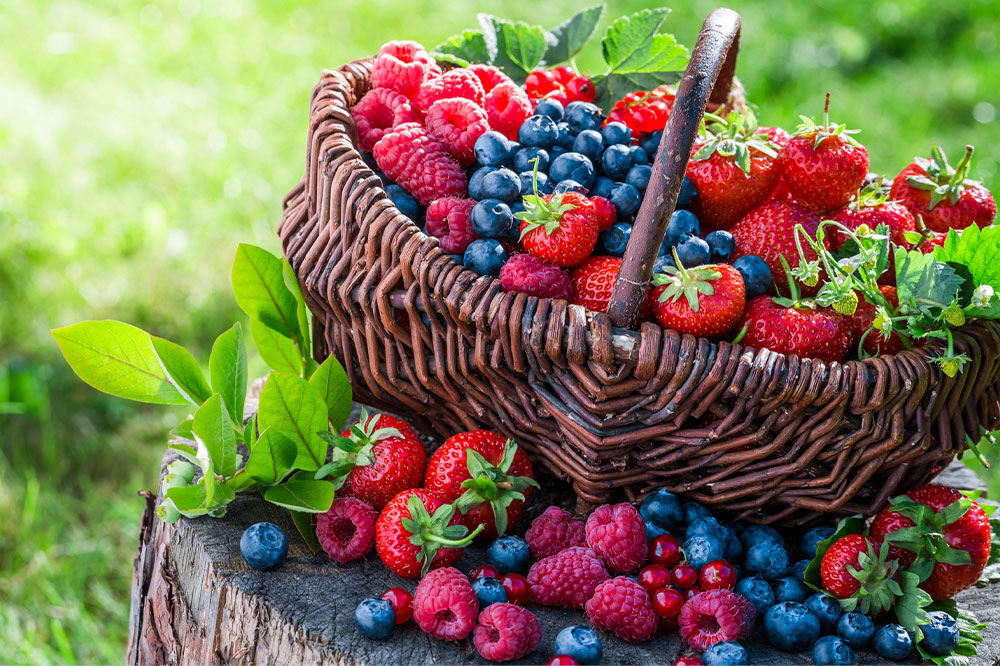Comprehensive Dietary and Medical Strategies for Managing Overactive Bladder Symptoms
This comprehensive article explores effective dietary strategies and medical treatments for managing overactive bladder (OAB). It emphasizes bladder-friendly foods like bananas, berries, cauliflower, and eggs, alongside hydration tips and medical options such as Mirabegron and TOVIAZ. Proper management involves a holistic approach that combines nutrition, lifestyle changes, and medication, helping individuals reduce symptoms and improve their quality of life. The guide offers valuable insights for those seeking relief from OAB's discomfort and urgency, promoting bladder health through proven strategies.

Holistic Approaches to Enhance Bladder Health and Alleviate Overactive Bladder Symptoms
Overactive bladder (OAB) is a common condition characterized by sudden, urgent, and frequent urges to urinate, often accompanied by involuntary leakage or incontinence. It can significantly impact daily life, causing discomfort, emotional distress, and social limitations. Effectively managing OAB requires a multifaceted approach that includes lifestyle adjustments, dietary modifications, and medical interventions. This comprehensive guide delves into various dietary strategies that can promote optimal bladder health, alongside medical treatment options to help manage and reduce OAB symptoms.
Incorporating Bladder-Friendly Foods into Your Diet
Understanding the role of diet in bladder health is crucial for those experiencing OAB. certain foods contain nutrients and compounds that support urinary tract function, reduce inflammation, and prevent infections. Here are some key foods that can contribute to better bladder health:
Bananas: A Gentle and Nutritious Choice
Bananas are well-known for their high fiber content and rich antioxidants, making them a safe and effective option for supporting overall health and specific bladder functions. The high pectin fiber in bananas helps regulate digestion, preventing constipation, which can exacerbate urinary issues. Additionally, bananas are low in acid, reducing the risk of irritation to the bladder lining, making them suitable for individuals with sensitive urinary tracts.
Benefits of Berries: Cranberries and Blueberries
Many health-conscious individuals turn to berries like cranberries and blueberries to promote urinary health. Cranberries contain natural acids, such as hippuric acid, that inhibit the adhesion of bacteria like E. coli to the bladder walls, effectively preventing urinary tract infections (UTIs), which are common triggers for OAB. While cranberries are beneficial, it’s essential to consume them in moderation because their acidity may cause irritation in some individuals.
Blueberries, on the other hand, are rich in antioxidants including flavonoids, which combat oxidative stress and support the immune system. Their anti-inflammatory properties help reduce bladder inflammation, potentially alleviating symptoms of urgency and frequency. Incorporating a variety of berries into your diet can be an excellent strategy to maintain urinary tract health and overall wellness.
Vegetables for Bladder Support: Cauliflower
Cauliflower is a cruciferous vegetable loaded with essential nutrients like vitamin C, folates, and dietary fiber. It also contains indoles, compounds known for their anti-inflammatory effects, which can help mitigate inflammation in the urinary system. Reduced inflammation often translates to less urgency and discomfort, enabling a better quality of life for those with OAB.
Including cauliflower in your meals—whether steamed, roasted, or raw—can provide a nutritious boost while supporting bladder health. Its gentle nature makes it suitable for individuals with sensitive urinary systems.
Hydration: The Cornerstone of Bladder Health
While some individuals believe that reducing fluid intake can lessen urinary urgency, modern medical advice emphasizes proper hydration as critical in managing OAB. Drinking an adequate amount of water helps flush out bacteria and toxins, reducing the risk of infections that can worsen symptoms. Moreover, well-hydrated tissues are less prone to irritation and inflammation.
It’s important to find a balance—drinking enough water throughout the day but avoiding excessive intake that might increase bladder pressure. Monitoring urine color (pale yellow is ideal) can serve as a helpful guide to maintain optimal hydration levels.
Other Nutrient-Rich Vegetables: Winter Squash and Green Beans
Varieties like butternut and acorn squash are rich in anti-inflammatory compounds that can help soothe inflamed bladder tissues and improve urinary health. These vegetables are also high in vitamins A and C, crucial for immune function and tissue repair.
Green beans are another excellent option—they are easy to incorporate into various dishes, gentle on the urinary tract, and packed with nutrients. Eaten raw or cooked, green beans offer a nourishing addition to a bladder-friendly diet, promoting overall urinary tract wellbeing.
Protein Sources: Eggs and Egg Whites
Eggs are a complete protein source that can be comfortably included in a bladder-conscious diet. Their low acidity and high nutritional value make them a safe choice for supporting tissue repair and muscle strength, including bladder muscles. Eggs and egg whites are versatile, easily prepared, and generally well-tolerated by individuals with OAB.
Beyond dietary considerations, medical treatments are often necessary for managing persistent or severe OAB symptoms. Several medications are available that target different aspects of bladder overactivity:
Medications for Overactive Bladder Management
Myrbetriq (Mirabegron): This medication acts as a beta-3 adrenergic agonist, relaxing bladder muscles to increase storage capacity. It effectively reduces symptoms such as urgency and frequency. However, side effects may include elevated blood pressure, dry mouth, and urinary retention—patients should monitor their reactions and consult their healthcare provider regularly.
Gemtesa: Another option, gemtesa, works by modulating bladder nerve signals. Potential side effects include urinary retention, which can interfere with complete bladder emptying. Patients often require careful assessment to determine suitability.
TOVIAZ: Developed by pharmaceutical giant Pfizer and approved by the FDA, TOVIAZ (tolterodine) helps decrease bladder overactivity. Like all medications, it may cause adverse reactions such as allergic responses, including swelling, rash, or difficulty breathing. Discontinuation should occur if such symptoms arise.
In more complicated cases or when medication isn't sufficient, other interventions such as catheterization may be employed. These involve inserting a tube into the bladder to divert urine, especially in cases of severe incontinence or urinary retention. Catheter types can vary, including indwelling or intermittent options, tailored to individual needs and medical advice.
Consulting with a healthcare professional is essential for a personalized treatment plan that may involve a combination of lifestyle, dietary modifications, and medications to effectively manage OAB and improve quality of life.





